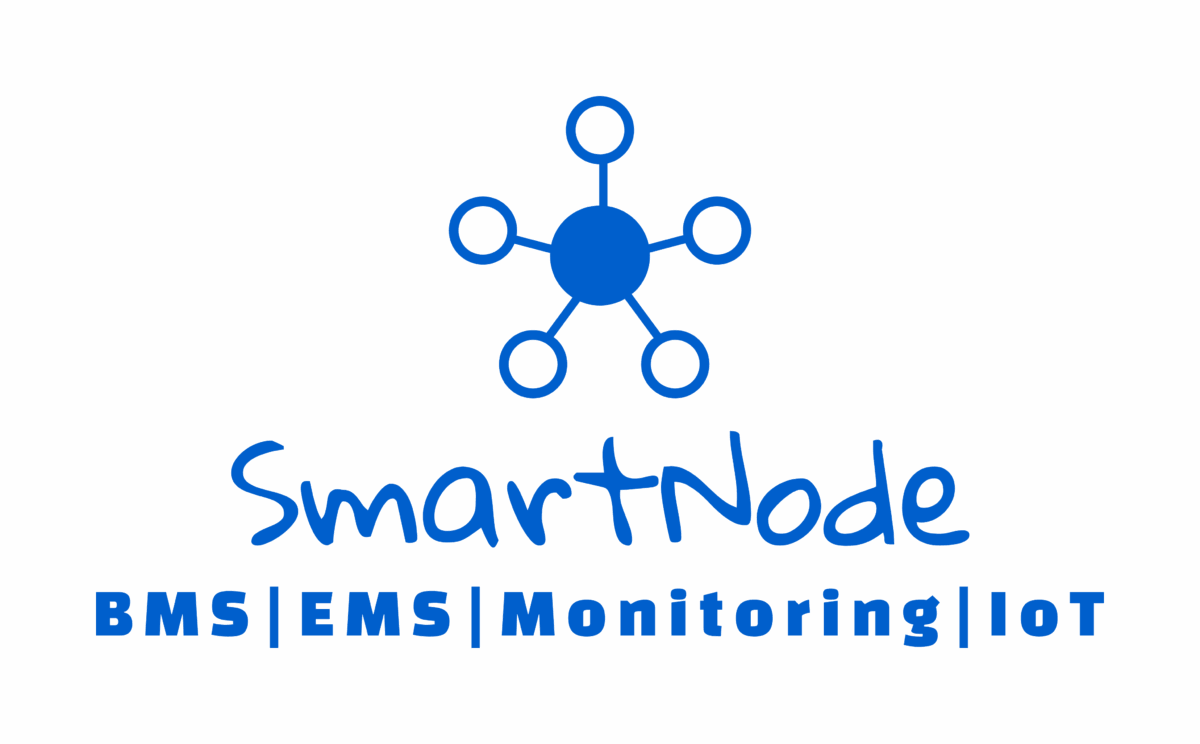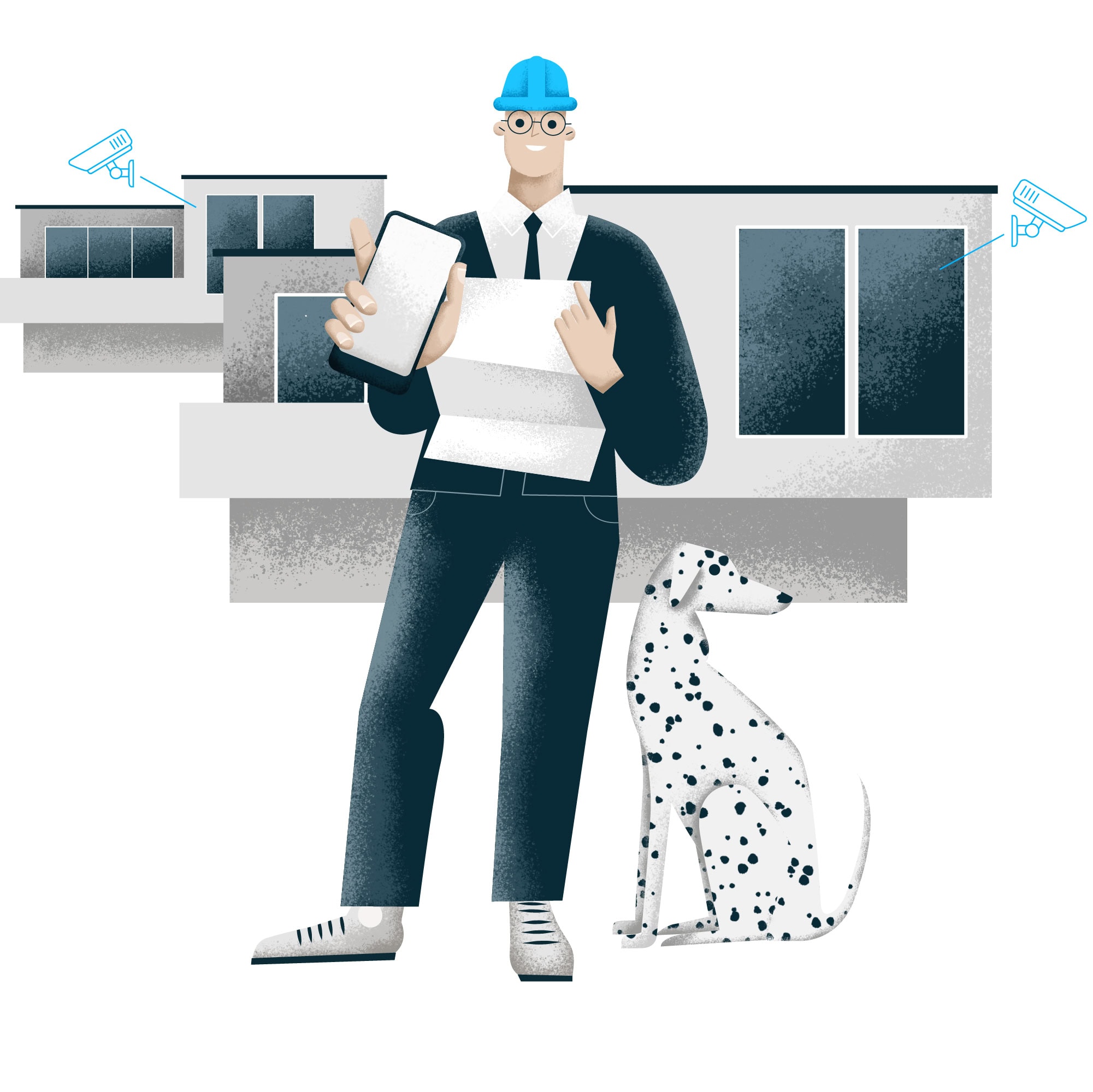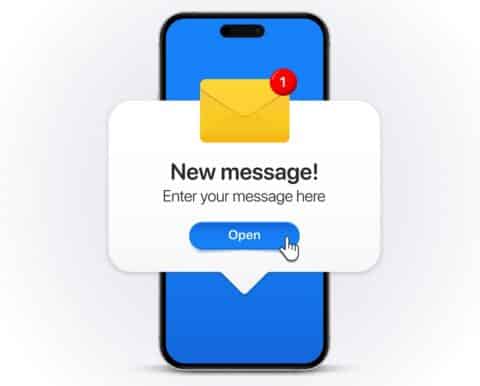BMS alerts: a practical guide for facility managers
SMS is quick, universal, and effective — and when paired with a dedicated hardware SMS gateway, it becomes a powerful tool for secure, large-scale communication.
Understanding the fundamental role of BMS alerts is the first step toward optimizing building operations. These notifications are more than just messages; they are data-driven indicators of your facility's health and performance. Please consider them the primary language your building uses to communicate its needs.
A Building Management System, or BMS, is an integrated, computerized platform designed to monitor and control a building's mechanical and electrical equipment. This includes systems for heating, ventilation, and air conditioning (HVAC), lighting, power, fire detection, and security. The primary function is to maintain occupant comfort, ensure system efficiency, and provide real-time data about the building's operational status. An effective BMS is the foundation of any smart building strategy.
Not all communications from a BMS are equal. It's important to understand the hierarchy. A 'notification' might be a routine status update. An 'alert' typically signifies a deviation from normal operating parameters that requires attention. An 'alarm' indicates a critical issue that demands immediate intervention to prevent equipment failure, safety risks, or significant energy waste. Establishing this clarity is key to avoiding alarm fatigue.

SMSEAGLE CASE STUDY:
This case study describes how Johnson Controls ensured reliable and secure 24/7 SMS communication for building automation systems worldwide, overcoming regional cellular limitations. Thanks to SMSEagle they was able to deliver automated, scalable alerts for safety alarms and system malfunctions. This solution gave facility managers enhanced control and confidence through continuous monitoring and dependable notifications.

Smart Node Case Study illustrates how a healthcare facility in Hungary implemented SMSEagle’s SMS-based water leak detection system to ensure safety without 24/7 staff presence. These examples highlight the application of SMSEagle’s solutions in building automation contexts.
Proactive management starts with categorizing the types of BMS alerts you receive. By understanding their source and potential impact, your team can develop more structured response protocols. Please review your system's documentation for specific categories relevant to your facility.
HVAC systems are often the largest energy consumers in a commercial building. BMS alerts related to HVAC can indicate filter clogs, coil inefficiencies, abnormal pressure differentials, or sensor failures. A single ignored alert can lead to escalating energy costs and compromised air quality. This is a critical area for any facility manager.
Alerts from lighting and electrical systems can signal circuit overloads, bulb failures in critical areas, or unexpected energy consumption spikes. These BMS alerts help ensure safety compliance and identify opportunities for energy savings. For more details, please check your system's configuration.
A modern BMS often integrates with security systems. An alert in this category could mean a door propped open, an unauthorized access attempt, or a CCTV camera failure. The timely delivery of this type of alert is non-negotiable for ensuring the security of the facility and its occupants.
Ignoring or improperly managing BMS alerts has direct and significant financial consequences. From wasted energy to costly emergency repairs, the impact on the operational budget can be substantial. Let's look at another aspect of this financial drain.
What is the cost of HVAC inefficiencies? An unaddressed BMS alert about a faulty sensor or a struggling chiller can cause the system to run inefficiently for weeks, leading to a noticeable increase in utility bills. Over a year, these small inefficiencies accumulate into thousands of dollars in preventable expenses. A proper alert system helps mitigate this.
A minor alert, such as a notification about unusual motor vibration, can be a precursor to major equipment failure. A delayed response transforms a low-cost, planned maintenance task (like bearing lubrication) into an expensive, reactive emergency repair that includes equipment downtime and potentially the need for spare parts.
One of the biggest challenges in managing BMS alerts is 'alarm fatigue'—a state where personnel become desensitized to frequent, non-critical notifications. How does CIM ensure we don't add to alarm fatigue? By implementing a smarter, more targeted alert strategy. A well-designed system cuts through the clutter.
Not every BMS alert requires the same level of urgency. Create a matrix that classifies alerts based on severity (critical, major, minor) and system impact (safety, operational, efficiency). This ensures that the team focuses its attention on the issues that matter most, reducing the noise from low-priority notifications.
Clear, documented procedures are essential. For each type of alert, define the initial response steps, the escalation path, and the required documentation. This consistency ensures that every alert is handled correctly, regardless of who is on duty. Please make this guide available to your entire team.
The effectiveness of a BMS alert depends heavily on its delivery. If the right person doesn't receive the message in time, the alert itself is useless. Choosing the right channel is a critical decision for any facility manager. Please consider the following options.
Email and mobile push notifications are accessible and low-cost. However, they are entirely dependent on a stable internet connection and can be easily missed in a flood of other messages. For non-critical alerts, they can be sufficient, but they lack the robustness required for a critical alarm.
SMS messages operate on the cellular network, making them independent of internet availability. This makes SMS a highly reliable channel for critical BMS alerts. When an internet outage occurs, you will still receive the alert about a server room overheating. There are two primary models for sending SMS alerts.
Online SMS services offer a subscription-based model. They are easy to set up and can scale quickly. However, they introduce several dependencies. Your critical alert data is sent to a third-party provider, creating potential security and data privacy concerns. Furthermore, their operation is entirely contingent on your internet connection and the provider's platform uptime.
A hardware SMS gateway like SMSEagle is a physical device that you own and operate within your own infrastructure. It connects directly to the cellular network via SIM cards. This approach offers distinct advantages for critical BMS alerts. Since the device is on-premise, your data never leaves your network, ensuring maximum security and control. Most importantly, it functions without an internet connection, guaranteeing that a critical alarm will be delivered even during a network outage. This reliability is why organizations like Johnson Controls use SMSEagle for secure communications in building automation.
Simply acknowledging an alert to silence it is a common mistake. A proper resolution process ensures the underlying issue is fixed and documented. This guide provides a simple, effective workflow. Please follow these steps for every alert.
Before clearing the alert, investigate the cause. Use the BMS platform to review trends, setpoints, and related equipment data. Acknowledging the alert without a diagnosis is like hitting the snooze button on a fire alarm.
Once the root cause is identified, perform the necessary corrective action. This could involve dispatching a technician to a workshop, adjusting a setpoint remotely, or ordering spare parts. The action should directly address the issue that triggered the BMS alert.
After confirming the issue is resolved, you can clear the alert in the system. Crucially, document the cause, the action taken, and the outcome. This historical data is invaluable for identifying recurring problems and for future troubleshooting. Please make sure this documentation is detailed.
Your history of BMS alerts is a rich dataset. Analyzing this data can reveal patterns and insights that lead to significant operational and financial improvements. This is where your BMS becomes a strategic asset.
By analyzing historical HVAC alerts, you can identify which units are underperforming or require frequent attention. This data-driven approach allows you to prioritize preventative maintenance and justify capital expenditures for equipment upgrades, directly addressing the impact of analytics data on HVAC efficiency.
Consistent alerts from a specific piece of equipment can indicate an underlying issue that routine maintenance is not addressing. This analysis helps you refine your maintenance strategies, moving from a reactive to a predictive model. For more details on this, please contact our support team.
Modern buildings contain increasingly complex systems that generate specialized BMS alerts. From electric vehicle charging infrastructure to large-scale battery storage, facility managers must be prepared to handle a new class of notifications.
Facilities with EV chargers or large battery systems, like those manufactured by Tesla, require specialized monitoring. A BMS alert could indicate a charging fault, a battery overheating issue, or a grid connectivity problem. A 'Tesla Alert' for a Powerwall system, for example, needs an immediate and informed response to ensure safety and operational continuity. This is another area where reliable, internet-independent alerts are crucial.
Many specialized systems, including High Voltage Battery Health monitors for a Tesla or similar systems, come with mobile applications. Integrating these platforms with your central BMS or your alert notification system is key. This ensures that a critical alert from a subsystem is not missed and is escalated through the proper channels, rather than being siloed in a separate app.
Immediate notifications about critical building system statuses, such as HVAC failures, security breaches, or fire alarms, ensuring prompt response to issues.
Text-to-speech voice messages to building management and maintenance teams for immediate attention to critical issues, such as system malfunctions or security breaches, ensuring prompt action and resolution.
Wake Up Calls are ring-only phone calls designed to notify maintenace staff about important events, ensuring that key personnel are informed and ready to respond promptly even during a night.
Built-in escalation feature manages the escalation process for alerts by sending them to a group group members until one of the users responds in time.
Sends automated reminders and alerts for routine maintenance, system checks, or energy usage reports, helping to ensure timely upkeep and efficiency of building systems.
Ensures continuous communication by automatically switching to a backup modem if the primary one fails, maintaining reliable messaging capabilities during network outages.
Shift Management streamlines scheduling and communication for staff in the building automation center by directing messages to only on-shift staff.
Ensures high availability and reliability of systems by using easy to setup master-backup cluster of 2 devices that increase fault-less configuration.
Allows monitoring and control of physical devices and sensors in the building automation system through SMS, enabling actions like remotely resetting systems or receiving alerts from sensors directly to mobile devices.
Allows conversion of emails into SMS messages, ensuring that critical updates and alerts reach maintenance staff or security personnel who might not be checking email constantly.
SMSEagle offers reliable SMS alert systems that send instant messages to building managers and repair teams about urgent problems, system breakdowns, and upkeep reminders. This helps teams to tackle issues right away cutting down on outages and keeping buildings working at their best.

Whether you are commissioning a new building or overhauling an existing system, implementing a structured BMS alerts protocol is essential for success. Please use this guide as a starting point for your internal workshop.
Work with your service provider to define precise thresholds for every alert. When should a temperature deviation trigger a minor alert versus a critical alarm? Define a clear escalation path: who receives the first alert? Who is the backup? Who gets notified if the alert is not acknowledged within a set time? Many systems offer robust integration options, such as the Niagara 4 SMS integration, to manage these workflows.
Technology is only as good as the people who use it. Conduct a regular training workshop for your facility management team and contractors. Ensure they understand the different types of BMS alerts, know the standard operating procedures, and are proficient in using the BMS platform for diagnosis. Contractors love using a platform that provides clear, actionable information.
The world of building management is constantly evolving. The future of BMS alerts lies in making them smarter, more predictive, and more integrated into the broader ecosystem of building operations. Technology continues to provide new tools to enhance this process.
Artificial intelligence will move BMS alerts from being reactive to proactive. AI algorithms will analyze vast amounts of historical data to predict potential failures before they happen, generating a 'pre-alert' that allows for scheduled maintenance, minimizing downtime and costs. This is the next frontier in building management.
The Internet of Things (IoT) is bringing more devices and sensors online, from smart lighting to water leak detectors. Integrating these devices into the BMS expands the scope of potential alerts, providing a more holistic view of the building's health. This also increases the need for a robust and scalable notification platform to handle the increased volume of alerts, including options to bridge communication channels like Whats App to SMS.
Here are answers to some common questions we receive about managing BMS alerts. For more information, please contact our support team.
The first step is always to verify and diagnose the alert. Immediately access the BMS platform to understand the context of the alarm. What system is affected? What are the current readings? This initial diagnosis informs the urgency and type of response required before dispatching any personnel.
A BMS alerts protocol should be reviewed at least annually, or whenever there is a significant change to the building's systems, such as an equipment upgrade or a change in tenancy. Regular reviews ensure the protocol remains relevant and effective. Please schedule this review with your team.
Yes. Modern BMS platforms and notification gateways offer APIs that allow for integration with Computerized Maintenance Management Systems (CMMS) and other platforms. An integrated system can automatically generate a work order in the CMMS when a specific BMS alert is triggered, streamlining the entire maintenance workflow from detection to resolution. For more details, please check out our integration options.
Concluding, are you ready to transform your building operations? Mastering your BMS alerts is a critical step. By implementing the strategies in this guide and leveraging reliable technology like an on-premise SMS gateway, you can enhance efficiency, reduce costs, and ensure a safer, more responsive building environment. Please contact us for more details about how SMSEagle can support your facility's critical communication needs.
SMS is quick, universal, and effective — and when paired with a dedicated hardware SMS gateway, it becomes a powerful tool for secure, large-scale communication.

To stay relevant and responsive, businesses must adopt agile communication strategies that meet their customers’ needs.

As businesses look for quicker and more dependable ways to communicate, the email to SMS gateway has become a must-have tool.